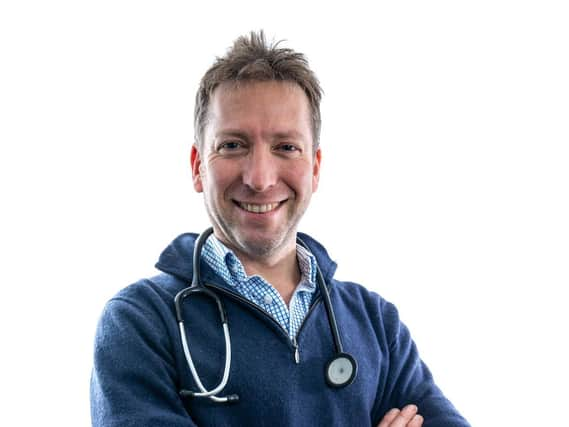I pointed the magic thermometer at my forehead again and noted the reading - Julian Norton


Team A was first on the rota. I was in Team B, so I stocked up my car, ready for my next stint and gathered some paperwork and reading to do at home.
I pondered leaving my magic thermometer, so that everyone could keep a check on their temperatures, but given the degree of scepticism of its reliability from my colleagues, and my recently formed habit of twice daily measurements, I decided to keep hold of it.
Advertisement
Hide AdAdvertisement
Hide AdAs I drove back up the A168, with a good couple of hours of daylight left, I started to plan my daily quota of exercise. I could get out on my bike from home, through Upsall, up Sneck Yate and back via Whitehorse Bank before darkness fell.
But by the time I pulled up the drive, an unusual and unfamiliar inertia had set in. Suddenly, the idea of toiling up one of Yorkshire’s steepest roads did not seem appealing. I pointed the magic thermometer at my forehead again and noted the reading was a couple of decimal places higher than it had been earlier in the day.
Was it just the thick fleece I was wearing? I peeled off a couple of layers and rechecked half an hour later. It had gone up again, by another 0.2 degrees. For now, I kept quiet and stayed inside.
By the middle of the evening the reading had risen to the point where the green light with the smiling picture of a baby’s face had changed to a red light and a frowning baby.
Advertisement
Hide AdAdvertisement
Hide AdI didn’t feel particularly ill, nor did I fear imminent hospitalisation, but I knew I was not right. I told Anne, who was more worried than me, and I sent a message to a colleague, promising to reassess with more information and a plan by morning.
By morning I was properly hot. The NHS website advice was pretty clear. I needed to stay at home for a week. My family needed to stay inside for two – which meant Anne couldn’t go to work either.
I called the practice, apologising profusely for upsetting the rota. Everyone seemed happy for me to stay away, especially when I explained the soreness of my throat, the mild headache and developing tracheal cough, which sounded like a terrier with kennel cough.
The next thing I knew, it was half past one in the afternoon and I’d missed the morning, fast asleep in bed. This was not a normal thing. I felt sure I was another statistic, although without any hope of being tested, like anyone who has not had their coronavirus status confirmed.
Advertisement
Hide AdAdvertisement
Hide AdI’m used to investigating outbreaks of disease in a population. It just happens that the populations I deal with are groups of sheep or cows rather than people and the diseases are species specific such as enzootic abortion or respiratory syncytial virus.
Step one is always to confirm the diagnosis (using PCR tests to identify the pathogen or antibody tests to confirm exposure). Step two is to establish which animals have been exposed and infected.
We do more tests, collect more facts, which is the basis of all medical practice, human or veterinary. From there, we can come up with a plan of control. How much simpler (and more effective) would it be to isolate those individuals infected, rather than isolate everyone?
Without data, it is very hard to make a proper plan, let alone trust a computer-generated model.
But now, with my personal and presumed diagnosis, I had my own plans to make: how to survive a week without leaving the house or garden?